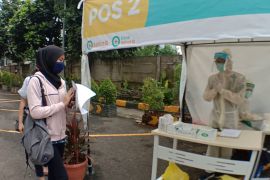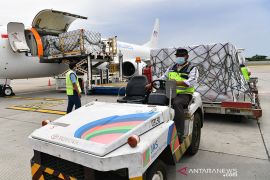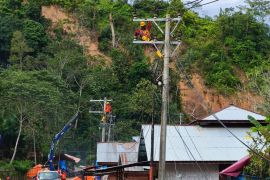So many people had died that several bodies were never buried. The corpses in coffins were placed near the highwayJakarta (ANTARA) - At least 597,185 people worldwide have contracted the coronavirus disease (COVID-19), an infectious ailment caused by the newly discovered coronavirus, as of Saturday (Mar 28), and over 27,360 died, as it continues to spread globally.
Worldometers data indicated that 133,360 patients had recovered from COVID-19.
COVID-19 has affected every province and region in China as well at least 198 other nations.
Most people infected with the COVID-19 virus will experience mild to moderate respiratory illness and recover without being administered special treatment.
Older people and those with underlying medical conditions, such as cardiovascular disease, diabetes, chronic respiratory disease, and cancer, are more predisposed to developing serious illness.
In the meantime, the Indonesian government has highlighted a spike in the number of COVID-19 positive patients.
On the basis of data obtained until Friday (Mar 27) at 12.00 local time, Indonesia reportedly had a total of 1,046 COVID-19 cases, while 153 new cases had surfaced.
COVID-19 that has turned out to be a global pandemic is not the first time that Indonesia has been devastated by ailments of such epic proportion.
Long before it was named Indonesia, the archipelago had also been plagued on numerous occasions by diseases, one of them being cholera.
The cholera outbreak hit Jakarta when it was still named Batavia.
According to the History of Disease Eradication in Indonesia, published by the Ministry of Health, cholera was identified in 1821.
Cholera is an acute diarrhoeal infection caused by eating or drinking food or water contaminated with the bacterium Vibrio cholerae.
Cholera is an extremely virulent disease that can cause severe acute watery diarrhoea along with severe dehydration. It takes between 12 hours and five days for a person to become symptomatic after consuming contaminated food or water. Cholera affects both children and adults and can kill within hours if untreated.
Most people infected with Vibrio cholerae do not develop any symptoms, although the bacteria are present in their faeces for one to 10 days after infection. Thus, the bacteria are shed back into the environment, potentially infecting other people.
Roorda van Eysinga, a colonial employee of indigenous affairs, had borne witness to the hustle and bustle when the cholera outbreak plagued the people of Batavia nearly 200 years ago.
"There was a time when 160 people had died (of cholera) in Batavia. They experienced severe convulsions and died a few moments later," noted Eysinga in Verschillende Reizen en Lotgevallen, as quoted by Historia.
Cholera triggered huge panic among Europeans since the outbreak spread swifter than other epidemic diseases, such as malaria, typhus, or dysentery.
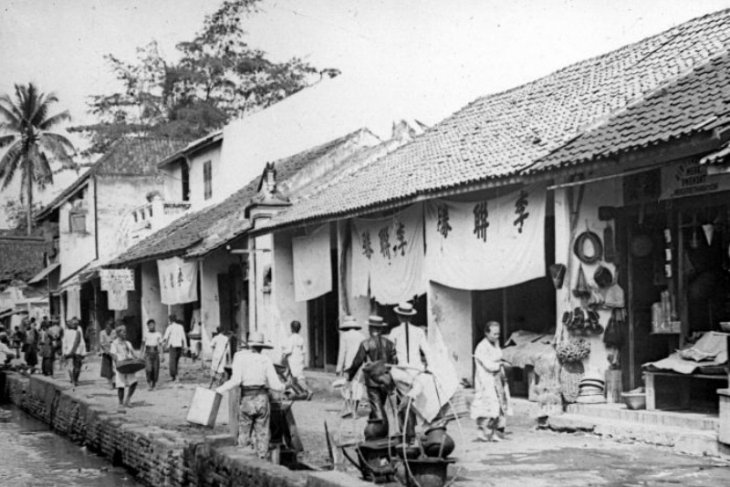
The bacteria causing cholera is typically transmitted through drinking water, food, and direct contact.
Susan Blackburn in Jakarta: History of 400 Years drew attention to the unique habits of Batavia’s citizens to ward off cholera.
For the ethnic Chinese community, cholera outbreaks could be prevented by holding a lion dance performance surrounding the Chinatown settlements.
They harbored a belief that the devil spreading cholera feared the lion dance. Meanwhile, Muslim natives vouched that drinking the special water prayed by Muslim clerics would help keep the disease at bay.
"Cholera was a very new disease and was spreading rapidly, so the Indonesian and Chinese communities responded in an unusual way," Blackburn wrote.
In the Jakarta Encyclopedia: Volume 2, 1910 and 1911 are recorded as the years when the cholera outbreak occurred.
During that time period, an estimated six thousand people of Batavia had died.
"So many people had died that several bodies were never buried. The corpses in coffins were placed near the highway. The epidemic even spread to the city of Bogor," Wiwin Juwita Ramelan wrote in a research report titled “Infectious Diseases in Batavia” at the University of Indonesia.
From Batavia, cholera also spread to the northern tip of Sumatra. By the 20th century, the Dutch army held a military expedition to conquer Aceh. As Anthony Reid revealed in the Origins of the Aceh Conflict, cholera continued to spread among Dutch soldiers and Aceh’s people.
Cholera Eradication
The Dutch East Indies government’s measured to eradicate cholera not only encompass applying regulations and forming health agencies but also developing cholera drugs and vaccines.
The development of drugs to eradicate cholera was characterized by the discovery of chemical drugs apart from traditional medicine.
Chemical drugs that functioned to kill cholera germs, included chloorkalk, a mixture of lime, chloor, sapocarbol, kresolzeep mixture; sublimate; and soap.
These chemical drugs complemented natural remedies, such as sunlight and boiling water.
The residents usually bought the chemical drugs from Javanese or European doctors.
The Dutch East Indies government, through the Institut-Pasteur in Bandung, also succeeded in discovering the cholera vaccine in 1912. Nyland, the brainchild behind the vaccine’s development, conducted joint research along with Flu, De Moor, and Martens.
The success of this vaccine’s discovery also coincided with the detection of how to distinguish Cholera Asiatica and Cholera El Tor by Van Loghem in the same year, according to Satrio, Indonesia National Health History volume I, (Jakarta: Ministry of Health of the Republic of Indonesia, 1978).
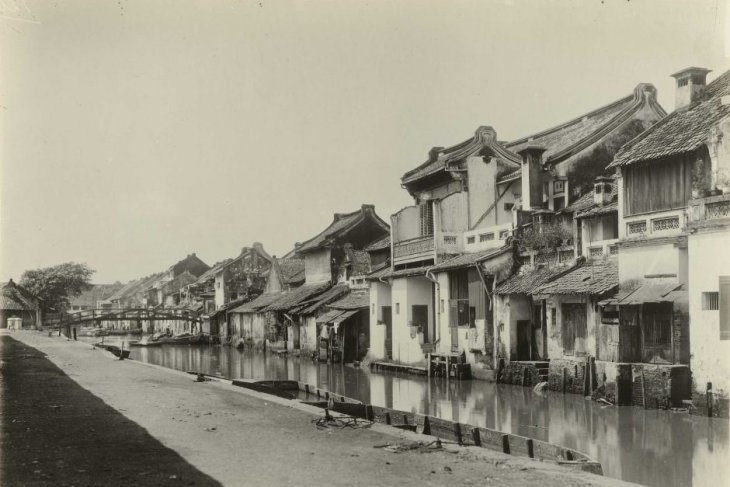
In 1920, the government had issued a policy on propagandists, or news announcers, tasked with furnishing health knowledge to the public through publishing, disseminating wall pictures, and screening health-centric films.
Furthermore, the private sector began developing medical centers and pharmacy.
The Dutch East Indies government also quarantined people in Batavia against individuals from areas affected by the cholera epidemic. Conversely, people intent on traveling outside the Batavia region had to first be administered the cholera vaccination.
The policy of the cholera vaccine injection applied to people, who would perform Hajj, according to Peter Gardiner and Mayling Oey, "Morbidity and Mortality in Java, 1880-1880: The Evidence of the Colonial Report" in Norman G. Owen.
In 1922, the Dutch East Indies government had set up a Clean Water Investigation Center named Proefstation voor Waterzuivering in the Manggarai area.
In the meantime, the Government of Gemeente Batavia had also established a water-based company (waterleiding) based in Ciomas near Bogor.
It took four years to establish waterleiding to ensure that the residents would no longer consume unclean water.
Until 1929, this drinking water company, with 95 workers, had a pipeline spanning 312,718 kilometers, according to S. Z. Hadisutjipto, Around Two Hundred Years of Jakarta History 1750-1945, (Jakarta: Department of Museum and Restoration of DKI Jakarta Provincial Government, 2001).
In addition to the investigation and supply of clean water, the Government of Gemeente Batavia formed the Sanitation and Watering Agency to maintain cleanliness, particularly in the village area and maintain the aesthetic appeal of the city.
In terms of clearing garbage, the Sanitation and Watering Agency started in 1921 by using 15 garbage trucks and 90 carts to clean up the village and four boats to clean up the river.
This agency had cleaned the area of each village, covering an area of 750 m², on a daily basis. The Government of Batavia also issued a regulation not to place dirt or rubbish outside the porch if it had not been removed by the janitor.
The policy aimed at clearing all villages of garbage that trigger the emergence of flies that carry pathogens causing cholera.
The City Council initiated village improvements encompassing building asphalt roads and gutters; expanding deep water well systems and piped water systems; providing public baths, public washing facilities, and community clinics; and conducting cholera vaccination.
The events, marking the cholera epidemic that mirror the difficult journey undertaken by Indonesian people, must remain etched in our collective memory and serve as a valuable lesson for the nation.
The Indonesian government can take a cue from its Dutch East Indies counterpart’s rapid and effective handling of cholera outbreaks to tackle the current coronavirus outbreak ravaging the nation.
Speed and accuracy are paramount to fighting the COVID-19 crisis, as the number of cases worldwide have surpassed 590 thousand.
Related news: 1,115 SE Sulawesi residents undergoing COVID-19 monitoring
Related news: TNI distributes over 150,000 pieces of protective gear in provinces
EDITED BY INE
Editor: Fardah Assegaf
Copyright © ANTARA 2020



